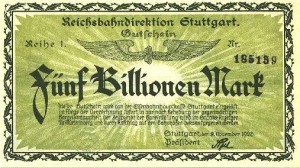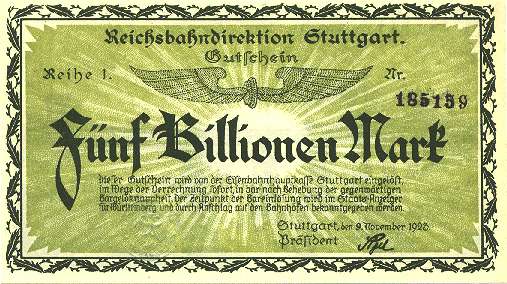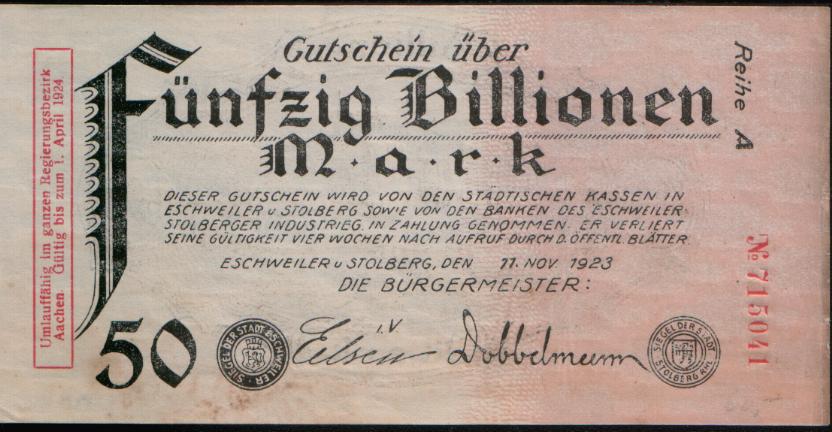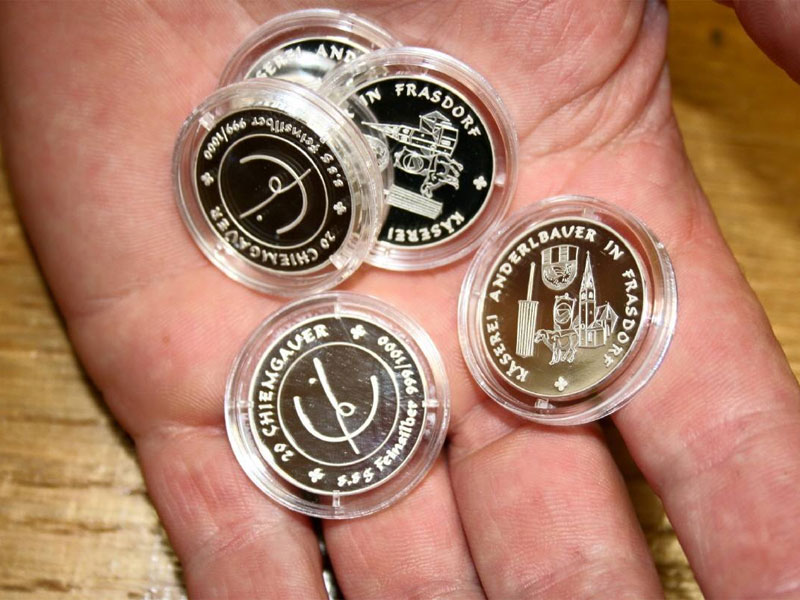The German economic hegemony in the EU is undoubtable. Its strong, export-driven surplus economy is to a large extent the steam engine of the European economy and one of the main factors for the success of the Euro as a common currency.
The German abhorrence to an unstable currency is deeply rooted in the their national sub-conscience, dating back to the 3-year (1921-24) period during the Weimar Republic, when by the end of 1923 one US dollar was worth 4 trillion Deutsch marks!!
5 trillion Deutsche Mark during Weimar period
50 trillion Deutsche Mark during Weimar period
This is one of the main reasons that whenever a plan emerges that in their view could ‘rock the Euro boat’ Germans are so vehemently opposed to it. But what if we told you that the disciplined, ‘savings’ loving and fiscally strict Germans have allowed the circulation of a parallel currency in their own homeland since 2003!
The Chiemgauer, which got its name from a Bavarian region in the south of the country is a currency that Germans use to trade and do their every day business. And it is actually very successful. It was introduced as part of school project in 2003 by economist teacher Christian Gelleri in order to get his 16-year-old students acquainted with how real finances work!
Chiemgauer notes
Chiemgauer coins
At first the Bavarians were mistrustful of the alternate currency, which was pegged at a one to one rate to the Euro. But in 2011 it had a turnover of over 5 million Euros! The locals see it as a way of keeping money within the local businesses and communities where it is generated, rather than letting all the cash ‘flee’ to globalised banks and chain stores. It is estimated that 2,500 people use it and is accepted by over 600 business in the region. Who nows, maybe they are on to something…They are Germans after all…
Ask me anything
Explore related questions









